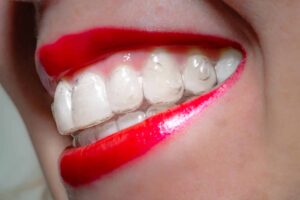Dental Treatment with Sedation
Dental treatment with sedation involves using medication to help patients relax during dental procedures, making the experience more comfortable and stress-free. It is especially beneficial for those with dental anxiety, sensitive gag reflexes, or complex treatments that require extended time in the dental chair. Different levels of sedation are available, ranging from mild relaxation to deep sedation, depending on the patient’s needs. This approach allows patients to receive necessary dental care without fear or discomfort, ensuring a smooth and painless experience.
Why Choose Dental Treatment with Sedation?
Here are four reasons to choose dental treatment with sedation:
Sedation helps alleviate dental anxiety and fear, allowing patients to feel calm and relaxed throughout their dental procedure.
For lengthy or invasive treatments, sedation ensures patient comfort, minimizing discomfort and making it easier for the dentist to complete the procedure efficiently.
Patients with sensitive gag reflexes can benefit from sedation, as it reduces the likelihood of triggering it, leading to a smoother dental experience.
Sedation allows for multiple procedures to be completed in a single appointment, saving time and reducing the number of dental visits required.
How Does Dental Treatment with Sedation Work?
Initial Consultation and Assessment
The dentist assesses the patient's medical history and level of anxiety to determine the most appropriate sedation option. Options may range from mild sedation (oral or inhalation) to deeper levels, like intravenous (IV) sedation.
Administration of Sedation
Depending on the sedation type, the medication is administered either orally, via inhalation (nitrous oxide), or through an IV. The patient begins to feel relaxed and drowsy, but still responsive to the dentist, unless deep sedation or general anesthesia is used.
Procedure Performance
While under sedation, the patient remains calm and comfortable, allowing the dentist to perform the necessary treatment, whether it’s a routine cleaning or a more complex procedure like a root canal. The patient typically has little to no memory of the procedure.
Post-Procedure Recovery
After the treatment is complete, the sedation wears off gradually. The patient is monitored until it’s safe to go home, and someone may need to accompany them if deeper sedation was used. Full recovery time varies based on the type of sedation.
Hear from Our Satisfied Patients

“I’ve always had terrible dental anxiety, but ALBGTC’s sedation dentistry made all the difference. I needed multiple treatments, and sedation helped me relax through the entire process. I didn’t feel a thing and barely remember the procedures. The team was so kind and understanding, and now I’m no longer afraid of going to the dentist. I’m so grateful for their care!”
– Emily R.
“Getting dental treatment used to be stressful for me, but sedation at ALBGTC changed that. I had to get a root canal, and sedation made the experience comfortable and pain-free. The staff explained everything clearly and ensured I was relaxed the whole time. I can’t recommend them enough if you’re nervous about dental work!”
– Michael T.

FAQs
ALBGTC offers different types of sedation, including nitrous oxide (laughing gas), oral sedation (a pill), and intravenous (IV) sedation. The level of sedation is tailored to the patient’s anxiety level and the complexity of the procedure.
Yes, sedation dentistry is generally safe when administered by trained professionals. The dentist will review your medical history and monitor you throughout the procedure to ensure your safety and comfort.
This depends on the type of sedation used. With mild sedation (like nitrous oxide or oral sedation), you will be awake but relaxed. Deeper sedation or general anesthesia may make you less aware or completely unconscious during the procedure.
Recovery time varies depending on the type of sedation. Nitrous oxide wears off quickly, while oral or IV sedation may take a few hours to fully wear off, and you may need someone to drive you home.


